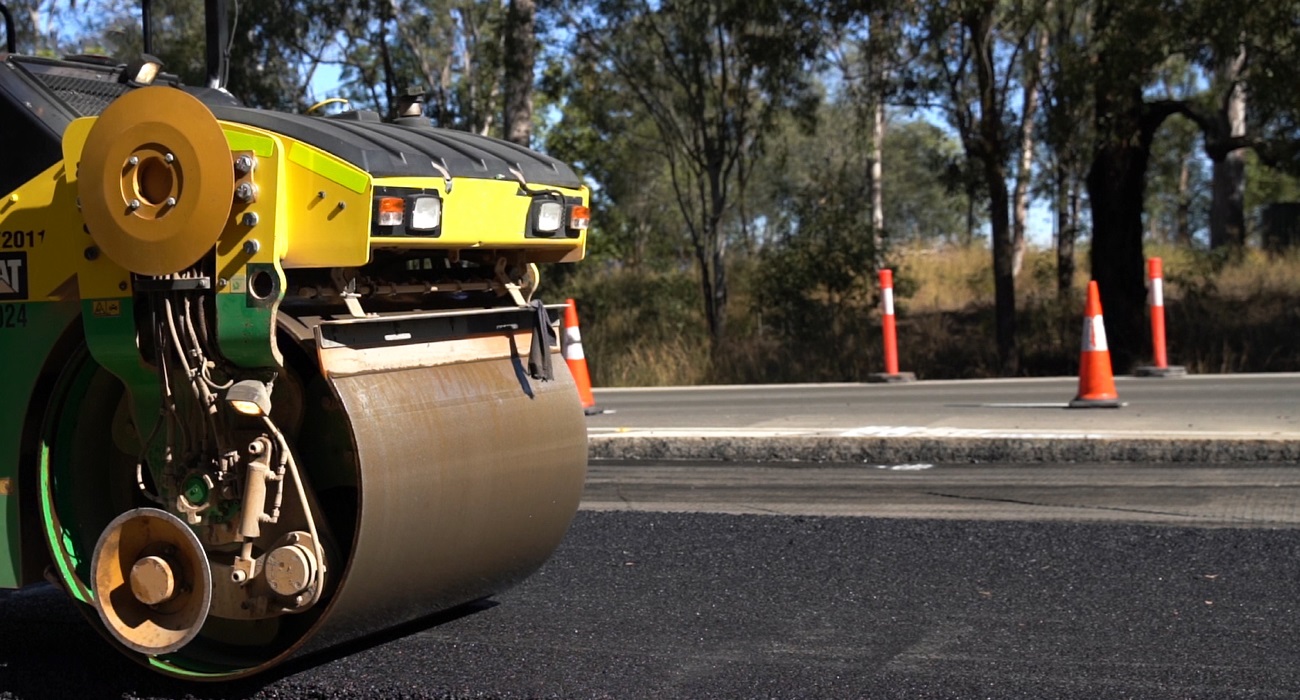
In Australia, the use of polymer modified binders (PMBs) has been increasing, driven by the need for more durable maintenance treatments and improved binder properties to cope with increased traffic stresses on surfaces. However, shortcomings in existing bituminous sprayed seal binders were creating problems such as cracking. So we focused on developing a new binder that would alleviate reflection cracks in sprayed seals.
The challenge
The current Austroads specification for sprayed seal binders provides guidance on the choice of binders considered suitable for the alleviation of reflection cracks through a seal. However, some of those binders have proved problematic for a variety of reasons, including the high potential for early-life stripping failure if they are not applied in ideal conditions.
So we set out to develop a new binder that would maximise the potential to alleviate reflection cracking while also maximising the stone adhesion and retention capabilities of the binder.
Currently specified PMB properties do not provide direct guidance on these binder characteristics. Consequently, in developing the new binder we also needed to develop a laboratory test to rank the relative performance of different bituminous binders to resist the reflection of cracks through a sprayed seal. We also undertook work to develop an adhesion test that would provide the same order of performance in the laboratory as is observed in the field.
The solution
Following a two-year program, we created a new sprayed seal binder: OLEXOBIT MAX. Its development required laboratory scale testing of prospective binder formulations, compared to existing binders in common use. This in turn required the development of laboratory-scale tests that could be used to determine both the relative resistance to reflection of cracks through a seal and the relative adhesion properties of different binder formulations.
An important objective of the binder development program was to ensure ease of use and that aggregate adhesion and retention properties were maximised. It was therefore decided to benchmark these properties against OLEXOBIT SAM, a sprayed seal grade PMB well known for its ease of use and excellent adhesive properties.
The final formulation was chosen to provide excellent resistance to reflection cracking together with superior early life adhesion and excellent long-term aggregate retention. The new binder was not designed to meet an existing specification – we wanted to go further than a single spec to maximise the binder’s performance.
Work conducted to date with OLEXOBIT MAX has confirmed its ease of use. It presents none of the problems commonly associated with alternative SAM seal binders.
An initial trial on Swanbank Road in Queensland, was conducted by the Queensland Department of Transport and Main Roads (QDTMR). The trial consisted of a double/double 14/7mm holding treatment over a pavement exhibiting severe and extensive cracking and surface defects. The trial involved construction with both traditional S20E grade binder and OLEXOBIT MAX to allow comparison of the two binders.
Several inspections of the trial site following construction confirmed the excellent stone retention properties of OLEXOBIT MAX, even under the fast-moving heavy traffic experienced on this site.
The impact
Due to the unique polymer modification used in OLEXOBIT MAX, it can be successfully applied over a range of weather conditions as low as 15°C. The binder also has excellent storage and travel stability.
OLEXOBIT MAX is recommended for application in SAM seals under the following conditions:
- High cracking severity where there are some crack widths of >2mm and a slow to rapid rate of crack movement.
- Where there are frequent surfacing defects, such as patching.
- Under heavy traffic loading.
- On steep grades and tight curves.
- At intersections, T-junctions and heavy traffic entrances involving severe degrees of braking, acceleration or turning motions.


